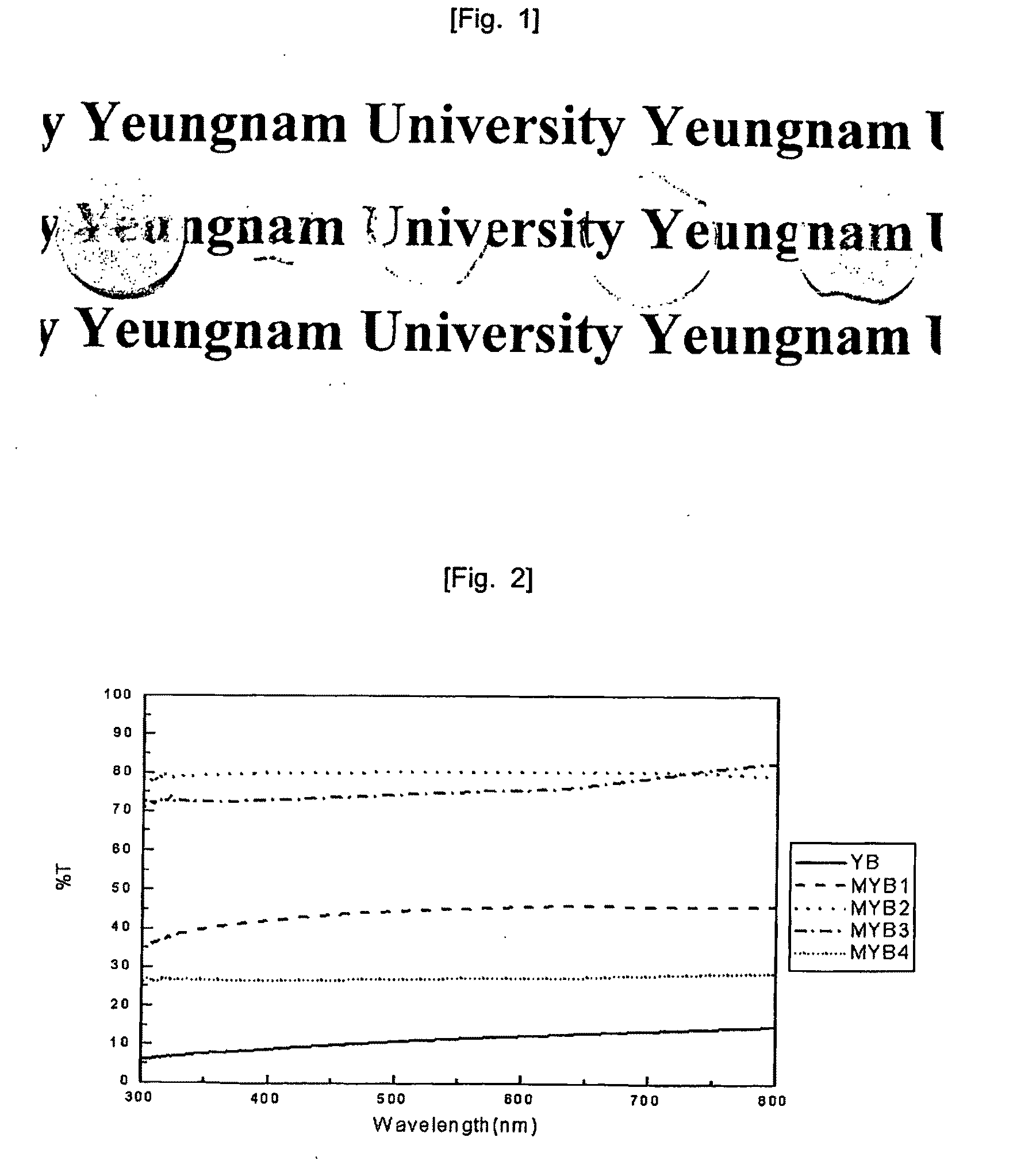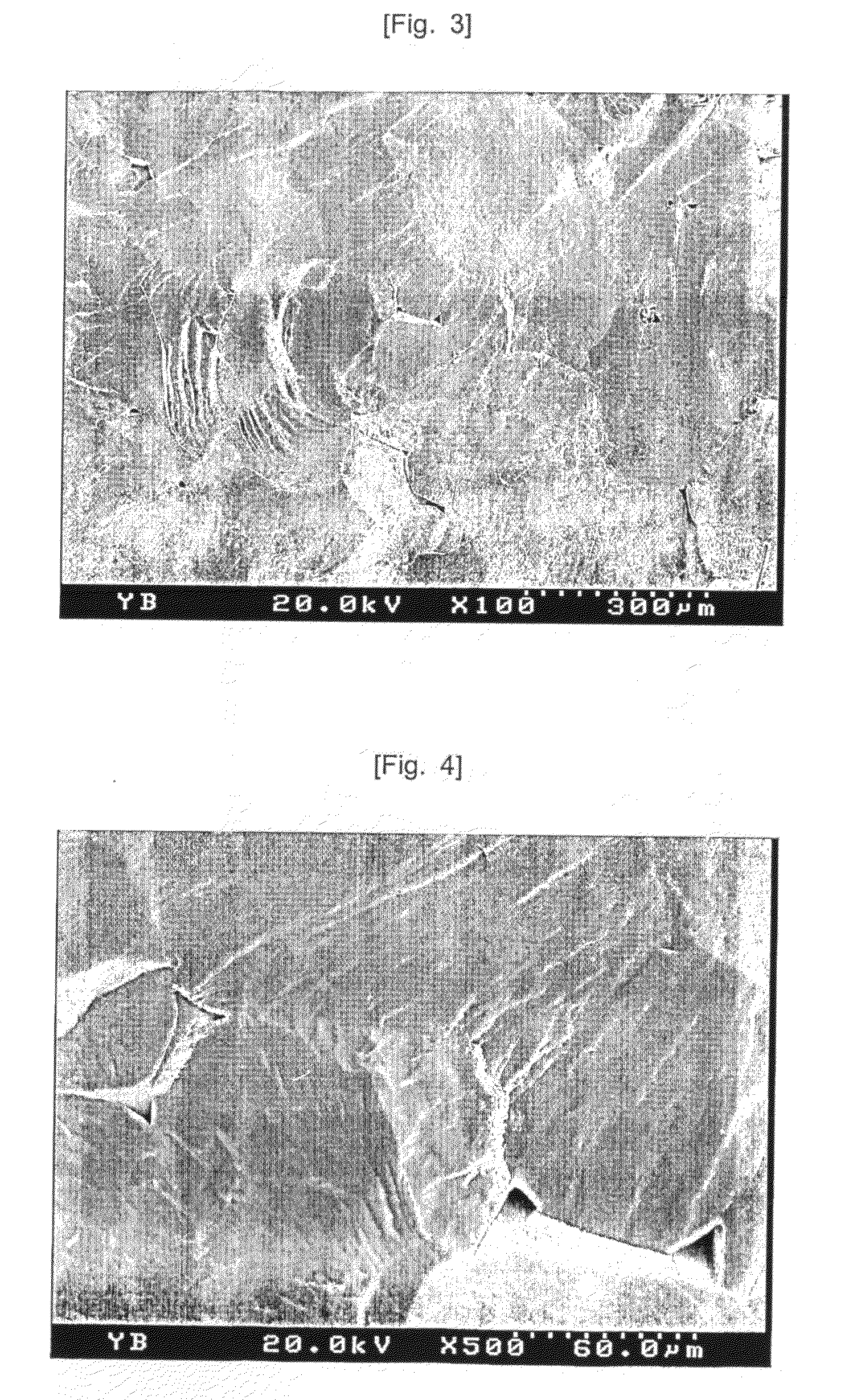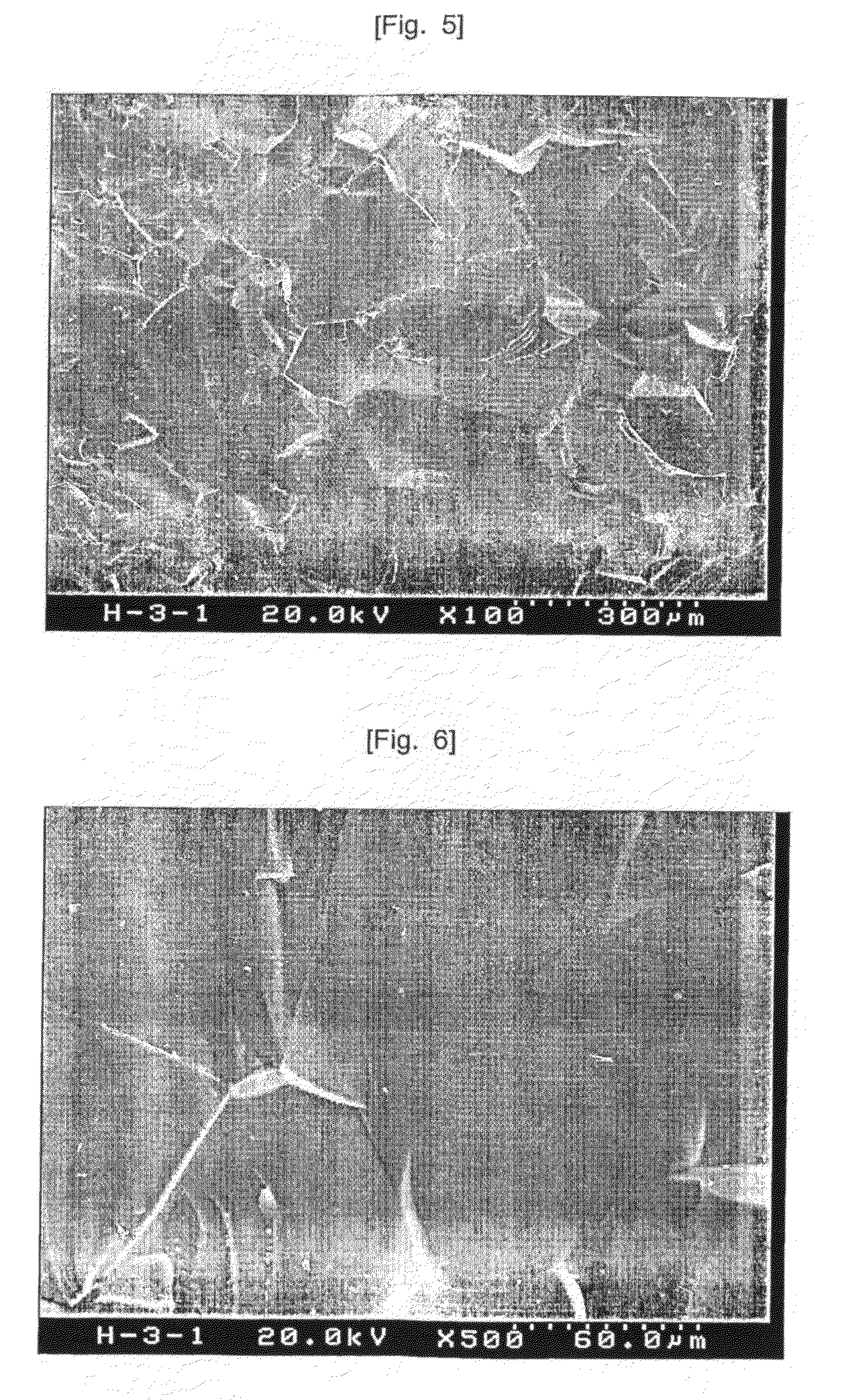Method for manufacturing transparent polycrystalline aluminum oxynitride
a technology of aluminum oxynitride and transparent aluminum, which is applied in the field of manufacturing polycrystalline aluminum oxynitride ceramic, can solve the problems of low transparency of alumina, complex processes, and lowering transparency
- Summary
- Abstract
- Description
- Claims
- Application Information
AI Technical Summary
Benefits of technology
Problems solved by technology
Method used
Image
Examples
example 2
[0045]Aluminum oxynitride ceramic samples were fabricated by using the same method as in example 1 except that the sintering additive of 0.2 wt. % MgO, 0.08 wt. % Y2O3 and 0.02 wt. % BN was differently added to each sample in the following manner: (1) no addition; (2) addition of MgO and Y2O3; (3) addition of MgO and BN; (4) addition of Y2O3 and BN; and (5) addition of MgO, Y2O3 and BN.
[0046]FIG. 7 is a photograph taken for purposes of comparing the transparencies of such fabricated aluminum oxynitride ceramic samples. (1) The sample without no addition of the sintering additives, (2) the sample with MgO and Y2O3 added thereto, (3) the sample with MgO and BN added thereto, (4) the sample with Y2O3 and BN added thereto, and (5) the sample with all of MgO, Y2O3 and BN added thereto are seen in said photograph from left to right. In case of no addition of MgO, the transparency was very low. In case of addition of MgO together with Y2O3 or MgO together with Y2O3 and BN, the transparency...
example 3
[0048]Aluminum oxynitride ceramic samples were fabricated by using the same method as in example 1 except sintering the samples for 5 hours at 2000° C. without presintering them. Addition amounts of MgO to each sample were at 0, 0.05, 0.1, 0.2 and 0.3 wt. %, respectively.
[0049]FIG. 11 is a photograph taken so that the transparencies of so fabricated aluminum oxynitride ceramic samples can be compared. In FIG. 11, the samples with MgO added thereto at 0, 0.05, 0.1, 0.2 and 0.3 wt. %, respectively, are arranged from left to right.
[0050]FIG. 12 is a graph showing measured values of the linear transmittance of each sample according to wavelengths. Table 3 shows the weight ratio of MgO and the average linear transmittance of such samples.
TABLE 3YB-bMYB-1-bMYB-2-bMYB-3-bMYB-4-bMgO(wt %)00.050.10.20.3Transmittance0.23.2463.1128.732.46(Average)
[0051]Similar to example 1, in case of addition of 0.1 wt. % MgO, the transparency was highest. However, the transparency was lowered by approximatel...
example 4
[0052]A sample with any sintering additive not added to Al2O3 and AlN powder, a sample with only 0.08 wt. % Y2O3 and 0.02 wt. % BN added as sintering additives, and aluminum oxynitride ceramic samples with 0.05 wt. %, 0.1 wt. %, 0.2 wt. %, 0.3 wt. %, 0.4 wt. % and 0.5 wt. % MgO added respectively thereto together with 0.08 wt. % Y2O3 and 0.02 wt. % BN were fabricated using the same method as in example 1, except that the samples were only presintered for 10 hours at 1675° C. A graph showing results on X-Ray Diffractometery (XRD) analysis of said eight samples is shown in FIG. 13 from top to down one after the other.
[0053]Referring to the graph of FIG. 13, peaks of not yet reacting Al2O3 and AlN appeared relatively high and a peak of aluminum oxynitride (ALON) appeared low in the samples without any MgO added thereto. On the contrary, as MgO was added more and more, the peaks of Al2O3 and AlN became low and the peak of aluminum oxynitride became high. The samples with 0.4 wt. % and 0...
PUM
| Property | Measurement | Unit |
|---|---|---|
| temperature | aaaaa | aaaaa |
| temperature | aaaaa | aaaaa |
| temperature | aaaaa | aaaaa |
Abstract
Description
Claims
Application Information
 Login to View More
Login to View More - R&D
- Intellectual Property
- Life Sciences
- Materials
- Tech Scout
- Unparalleled Data Quality
- Higher Quality Content
- 60% Fewer Hallucinations
Browse by: Latest US Patents, China's latest patents, Technical Efficacy Thesaurus, Application Domain, Technology Topic, Popular Technical Reports.
© 2025 PatSnap. All rights reserved.Legal|Privacy policy|Modern Slavery Act Transparency Statement|Sitemap|About US| Contact US: help@patsnap.com



